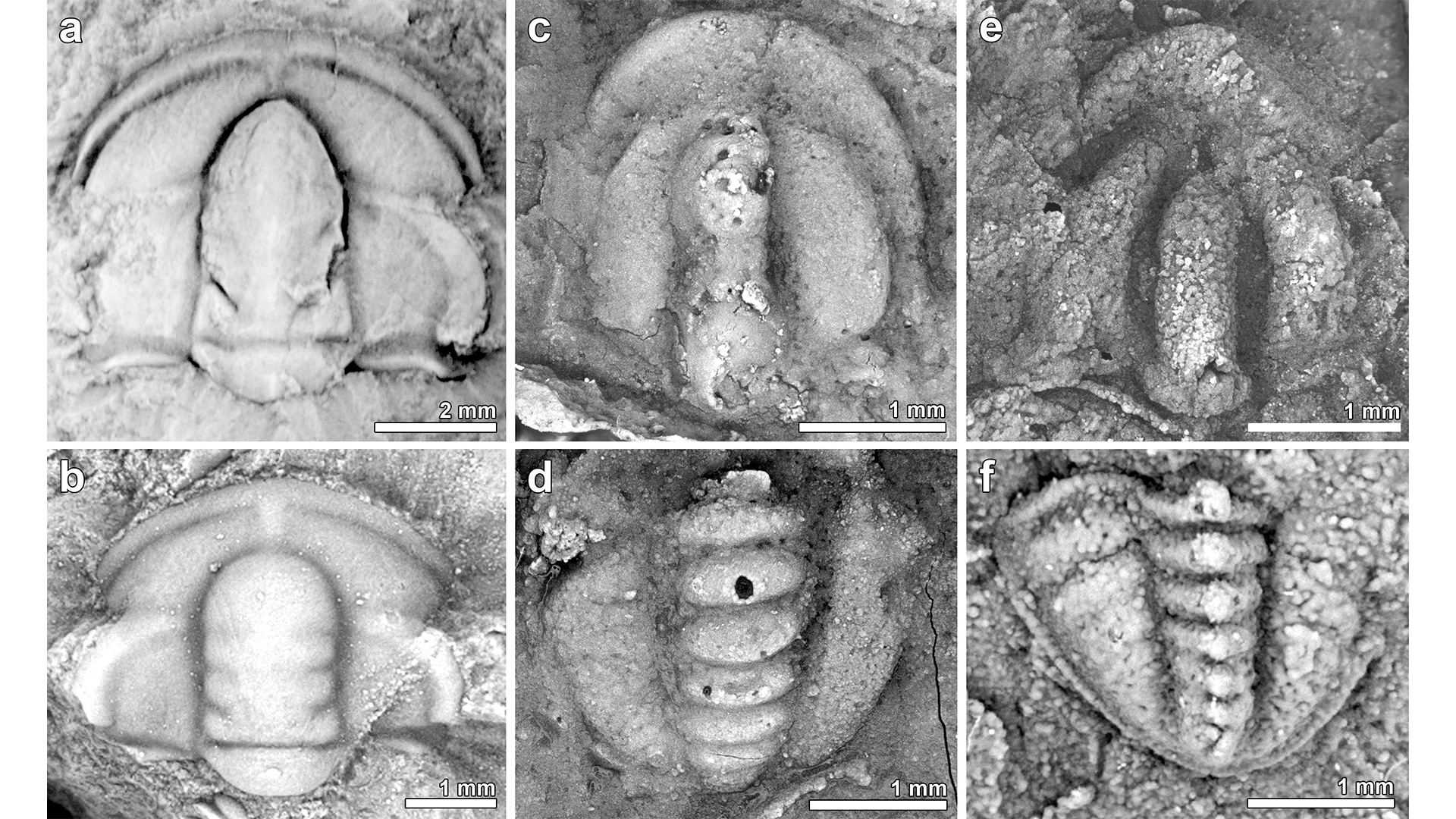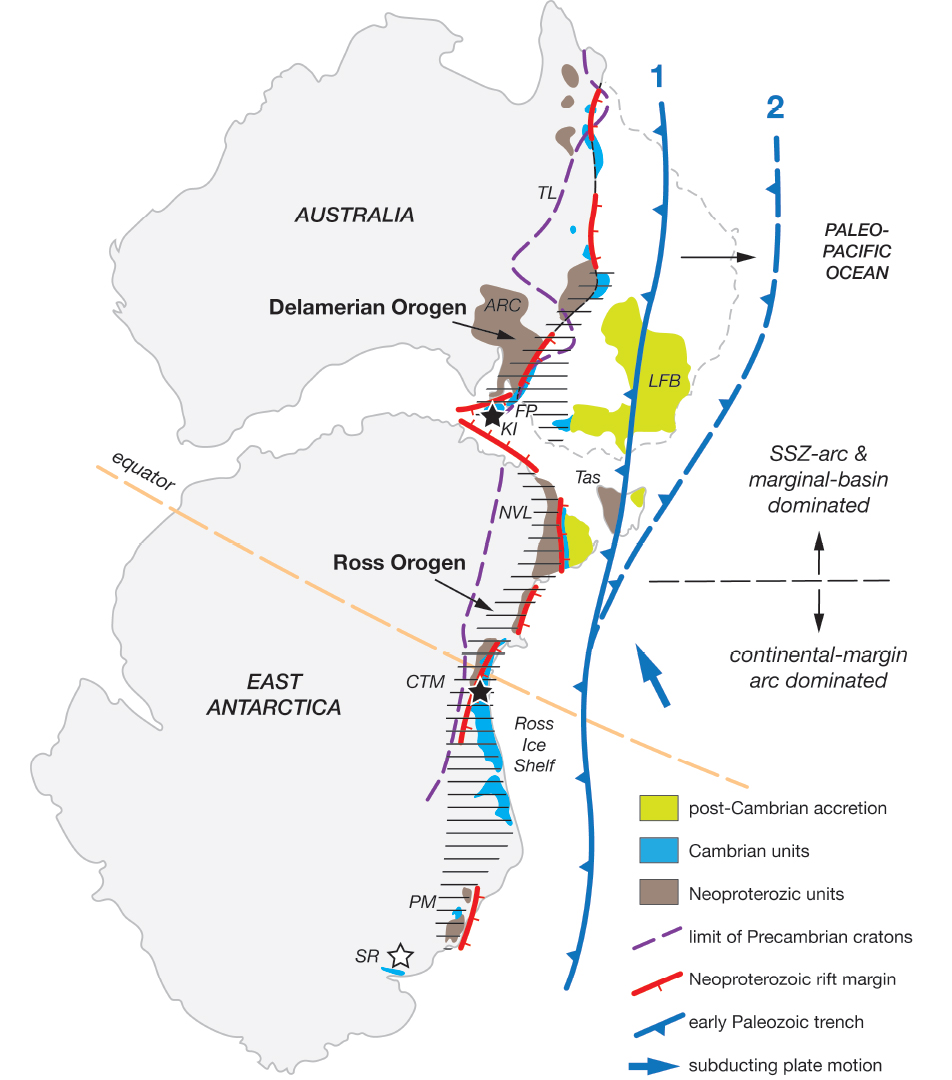Mass die-off half a billion years ago caused by shifting tectonic plates, ancient rocks reveal
A large extinction in the midst of the expansion of life during the Cambrian period was caused by the tectonics of a supercontinent, new research argues.

A major extinction in the midst of a huge expansion of life on Earth may have been driven by plate tectonics.
New research finds links between rock layers in Antarctica and Southern Australia, which at the time were part of the supercontinent Gondwana. This suggests that similar dynamics were occurring around the supercontinent roughly 513 million years ago: Mountains were uplifting, ancient reefs were dying, and eroded material from the continent was pouring into the sea. These moments in time coincide with the extinction known as the Sinsk event, said study leader Paul Myrow, a sedimentologist at Colorado College.
"Oddly, it was tectonics that triggered an extinction," Myrow told Live Science.
The Sinsk event occurred during the Cambrian period (540 million to 485 million years ago), which saw a huge diversification of life on Earth known as the Cambrian explosion.
But in the middle of this flourishing, the Sinsk extinction killed off several major groups, including cone-shelled animals called hyoliths and sponges called archaeocyathids, which once built enormous reefs all over the globe. Researchers know that the Sinsk event was linked to falling levels of oxygen in the oceans, but they haven't been able to pinpoint the precise cause.
Related: The 5 mass extinction events that shaped the history of Earth — and the 6th that's happening now
Now, Myrow and his colleagues say they have the answer. The tectonics of Gondwana, which formed between 600 million and 540 million years ago, triggered a series of events that drowned the archaeocyathid reefs and altered the oceans, they reported March 29 in the journal Science Advances.
Get the world’s most fascinating discoveries delivered straight to your inbox.
The clue to these events was found in rock layers in Antarctica’s Transantarctic Mountains and on Kangaroo Island, Australia. Myrow and his colleagues collected samples in Antarctica in 2011, including trilobite fossils from long-dead archaeocyathid reefs. Then, about a year ago, Pomona College geologist Robert Gaines told Myrow he'd seen similar rocks on Kangaroo Island, which is also studded with fossil trilobites.
These trilobites were the key to the timing of the loss of the reefs. Because trilobites evolved quickly, researchers can tell how old a rock is by the species of trilobite fossilized inside it. In both Antarctica and Australia, the fossils dated to between 514 million and 512 million years ago — right around the time of the Sinsk event.
"Everything clicked into place," Myrow said. "There was the same geologic history all the way over in Australia as there was in Antarctica."
At the time of the Sinsk event, both continents were part of Gondwana, with today's Antarctica sitting on the equator and Australia at a higher latitude. The locations showed a similar story in the rock layers. The extinction of the archaeocyathid reefs coincided with giant mountain-building events. As the mountains popped up on land, the nearby shallow oceans right off the coast subsided in a kind of seesaw motion of the crust. This caused the archaeocyathid reefs to suddenly deepen, submerging them past their ability to survive. Next, erosion from the new mountain ranges dumped layers of cobbles and gravel over the drowned reefs.
Meanwhile, Myrow said, the tectonic movements that caused mountains to lift in some places also caused the crust to stretch out in others, allowing magma to rise to the surface and harden into the rock basalt, a geologic formation known as a “large igneous province.” These hot magmas brought lots of greenhouse gases, like sulfur dioxide and carbon dioxide, causing Earth's atmosphere to warm.
This warming, in turn, slowed the circulation in the ocean — a phenomenon that researchers worry may happen again today with human-induced climate change. This slowdown of ocean circulation led less-oxygen-rich water to sink to the ocean bottom. This killed off many existing organisms, Myrow said.
"The older, more primitive ones didn't do so well," he said.
Large igneous provinces have been blamed for other extinctions, but with less certainty than the Sinsk event, Myrow said, "I don't know of any others that I could point to where it's so clearly laid out."

Stephanie Pappas is a contributing writer for Live Science, covering topics ranging from geoscience to archaeology to the human brain and behavior. She was previously a senior writer for Live Science but is now a freelancer based in Denver, Colorado, and regularly contributes to Scientific American and The Monitor, the monthly magazine of the American Psychological Association. Stephanie received a bachelor's degree in psychology from the University of South Carolina and a graduate certificate in science communication from the University of California, Santa Cruz.



